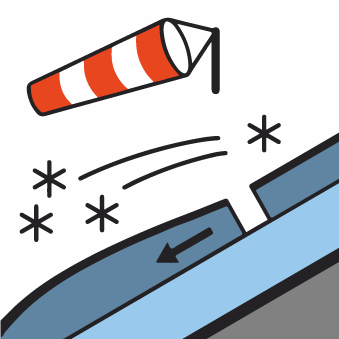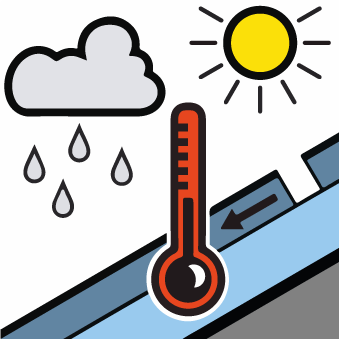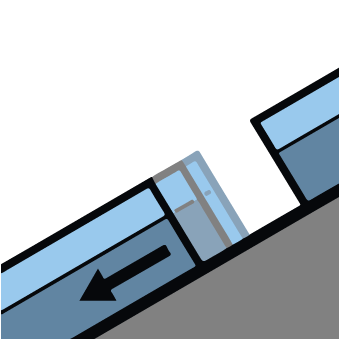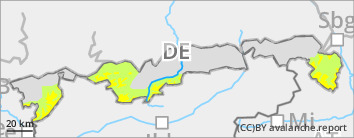
Danger level
 | 1800m |
| 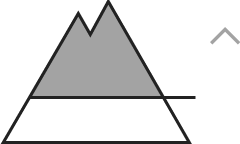 |
|  | ||||
|  |  |

Snowdrifts more trigger prone with ascending altitude. Smaller wet snow avalanches possible at all altitudes.
Avalanche danger above 1800 m is moderate, below that altitude danger is low. Older snowdrifts can be a problematic. In places, slabs can be triggered even by small additional loading. Avalanche prone locations are found in particular in steep ridgeline terrain at high altitude in east and south aspects as well as in wind-loaded gullies and bowls. Snowpack In addition,small wet loose snow avalanches can release naturally in very steep terrain. Isolated glide snow avalanches that are mostly small are possible on steep smooth grass-covered slopes. At intermediate altitudes this applies to all aspects; at high altitudes it appplies to sun-exposed slopes.
Snowpack
In particular at high altitudes soft layers under and within small-scale snowdrifts are still prone to triggering. There are still isolated layers consisting of faceted crystals in the are of crusts; they are still triggerable. Due to warming, the snow is thoroughly moist at intermediate altitudes and on the sunny side at high altitudes. Due to clear skies during Monday night, a melt-freeze crust will form in places that will soften again during the day. At higher altitudes moistening continues also on Tuesday; frequently the snowpack is wet down to the ground. Snow depths varies; all in all there is little snow.
Tendency
Thanks to mild weather snowdrift problem will decrease Wet and gliding snow problem will remain.
